 To enhance service speed and avoid tariff delays, we've opened a US warehouse. All US orders ship directly from our US facility.
To enhance service speed and avoid tariff delays, we've opened a US warehouse. All US orders ship directly from our US facility.
| Cat. No. | Product Name | Field of Application | Chemical Structure |
|---|---|---|---|
| DC60423 | 14:0 EPC (Cl Salt) |
14:0 EPC (Cl Salt) is a cationic derivatives of phospholipids consisting entirely of biological metabolites linked with two 14-carbon fatty acid tails. The lipid has low toxicity and is biodegradable.
More description
|

|
| DC60427 | 18:1 EPC (Cl Salt) |
18:1 EPC (Cl Salt) is a cationic derivatives of phospholipids consisting entirely of biological metabolites linked with two 18-carbon fatty acid tails with single alkene groups in each tail. The lipid has low toxicity and is biodegradable. Reagent grade, for research use only.
More description
|
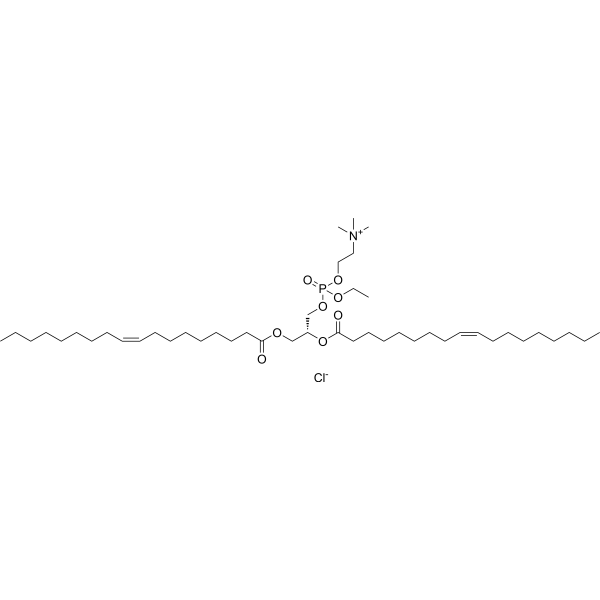
|
| DC80003 | 490BP-C14 |
490BP-C14 is a bisphosphonate lipid-like material for mRNA delivery. 490BP-C14 LPNs could enhance mRNA expression and localization in the bone microenvironment, which overcomes biological barriers to deliver mRNA therapeutics.
More description
|

|
| DC66587 | SDPC |
SDPC (DHA-PC) is a new generation of omega-3 lipids, which contains an ester bond linking DHA at the sn-2 position of phospholipid. 1-Stearoyl-2-docosahexaenoyl-sn-glyerco-3-phosphocholine exerts anti-angiogenesis effect through activating PPARγ. 1-Stearoyl-2-docosahexaenoyl-sn-glyerco-3-phosphocholine significantly declines the proliferation, migration, tube formation of human umbilical vein endothelial cells. 1-Stearoyl-2-docosahexaenoyl-sn-glyerco-3-phosphocholine has the potential for anti-tumor angiogenesis research.
More description
|
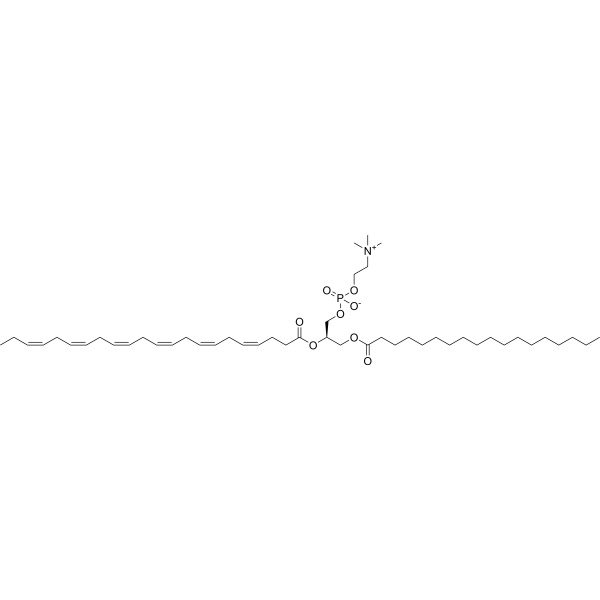
|
| DC73507 | WLB-89462 |
WLB-89462 (WLB89462) is a potent, highly selective sigma-2 receptor (σ2R) ligand with Ki of 13 nM, >100-fold selective over σ1R (Ki=1777 nM).
More description
|
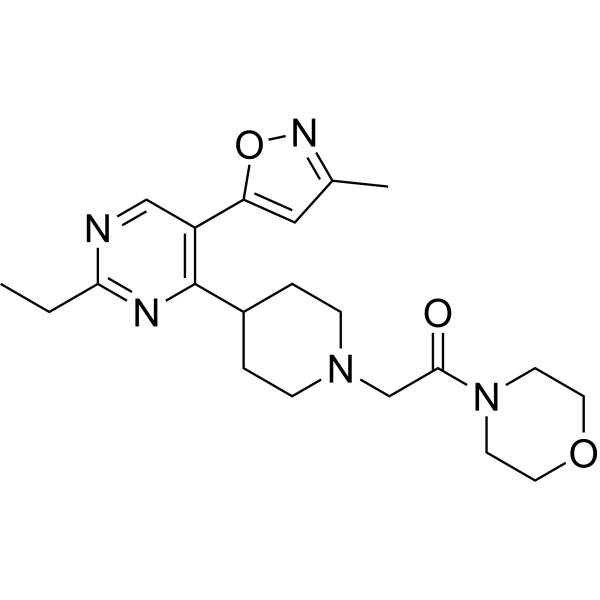
|
| DC65742 | (s)-1,2-Dioleoyl-sn-glycero-3-phosphoethanolamine |

|
|
| DC67096 | DMG-PEG2000-NHS |
DMG-PEG2000-NHS is a PEG derivative that can be used in various biomedical applications, such as the construction of drug delivery systems (siRNA delivery liposomes, lipid nanoparticle, etc.). The active ester (NHS) can react with an amino group (-NH2) to form a stable amide bond, which can be used as a linker in a bioconjugation strategy to modify amino-linked peptide proteins as well as other small molecules.
More description
|

|
| DC60420 | 18:1 TAP (DOTAP, MS Salt) |
18:1 TAP is a cationic liposome-forming compound that may be used for transfection of DNA, RNA, and other negatively charged molecules into eukaryotic cells. Reagent grade, for research use only.
More description
|

|
| DC67114 | Lecithin Hydrogenated |
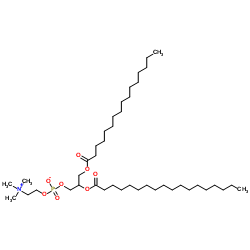
|
|
| DC67026 | Olpasiran sodium (Synonyms: AMG 890 sodium; ARC-LPA sodium) |
Olpasiran sodium is a small interfering RNA that reduces lipoprotein(a) synthesis in the liver.
More description
|

|
| DC65730 | DPhPC |
DPhPC is a phospholipid used to synthesize bilayer vesicles. DPhPC bilayers do not permit ions to leak in the absence of a pore/ion channel, which can be used for studies on channel proteins.
More description
|
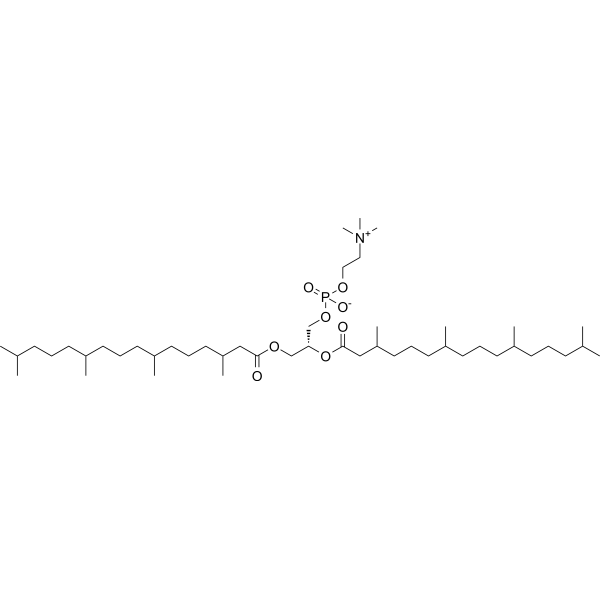
|
| DC67124 | Cho-Arg TFA |
Cho-Arg TFA is a steroid-based cationic lipid with an L-Arginine headgroup. Cho-Arg TFA shows a remarkably high optimized plasmid DNA transfection efficacy.
More description
|
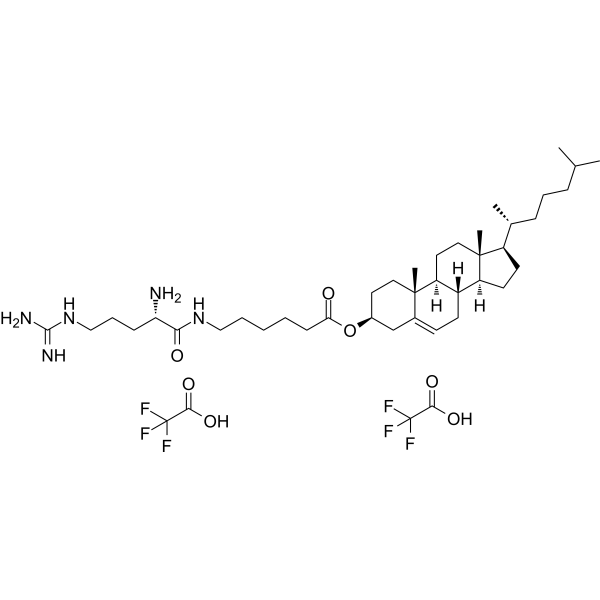
|
| DC67132 | C16 PEG750 Ceramide |
C16 PEG750 Ceramide (C16 PEG Ceramide (MW 750)) is a PEG lipid for the preparation of liposomes and can be used in drug delivery studies.
More description
|
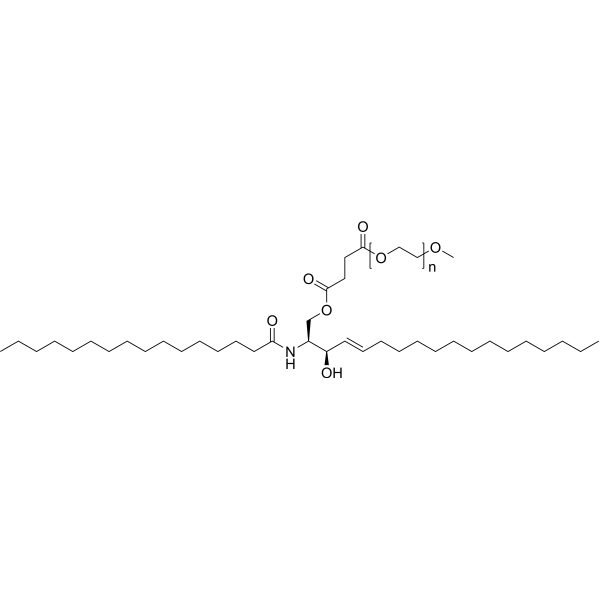
|
| DC34214 | Tricaprilin |
Tricaprilin, also known as Glyceryl trioctanoate, is a triglyceride drug candidate.
More description
|

|
| DCZ-032 | Palmitic acid |
Palmitic acid is a long-chain saturated fatty acid commonly found in both animals and plants. PA can induce the expression of glucose-regulated protein 78 (GRP78) and CCAAT/enhancer binding protein homologous protein (CHOP) in in mouse granulosa cells. Palmitic acid is used to establish a cell steatosis model.
More description
|
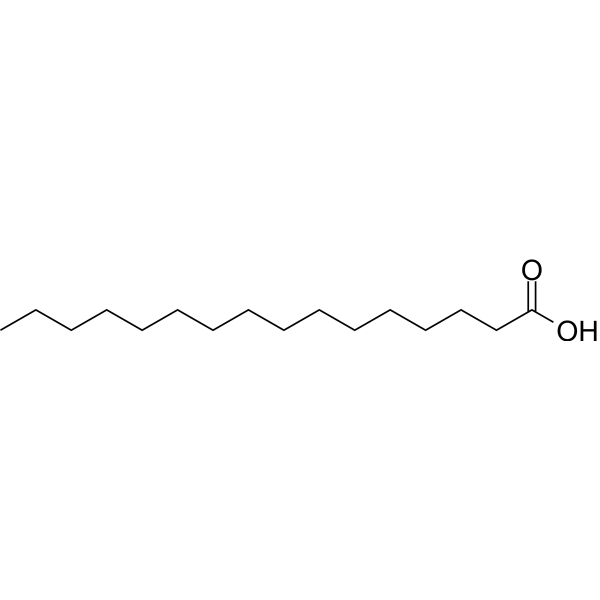
|
| DC66716 | Butylhydroxyanisole |
Butylhydroxyanisole (Butylated hydroxyanisole) is an antioxidant used as a food additive preservative. Butylhydroxyanisole mediates liver toxicity, retardation in reproductive organ development and learning, and sleep deficit. Butylhydroxyanisole exerts neurotoxic effects and leads to disruption of the brain and nerve development. Butylhydroxyanisole is a ferroptosis inducer.
More description
|
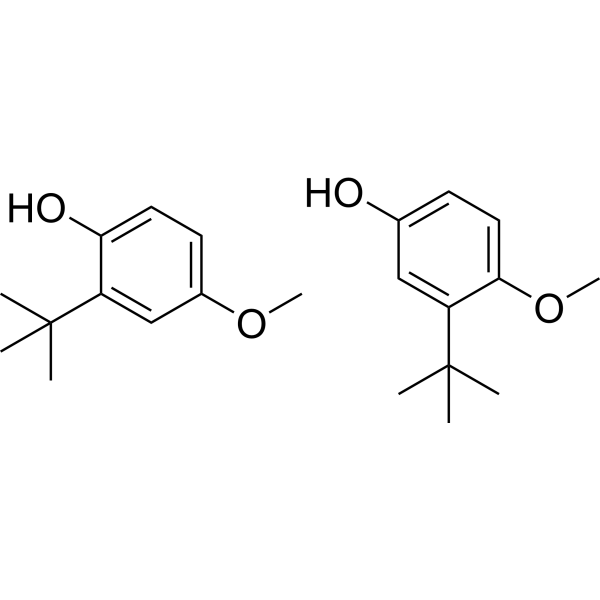
|
| DC33460 | Calcium D-saccharate tetrahydrate |
Calcium saccharate is an oxidized non-cyclic hexose sugar. It may inhibit carcinogenesis and proliferation of cancer cells.
More description
|
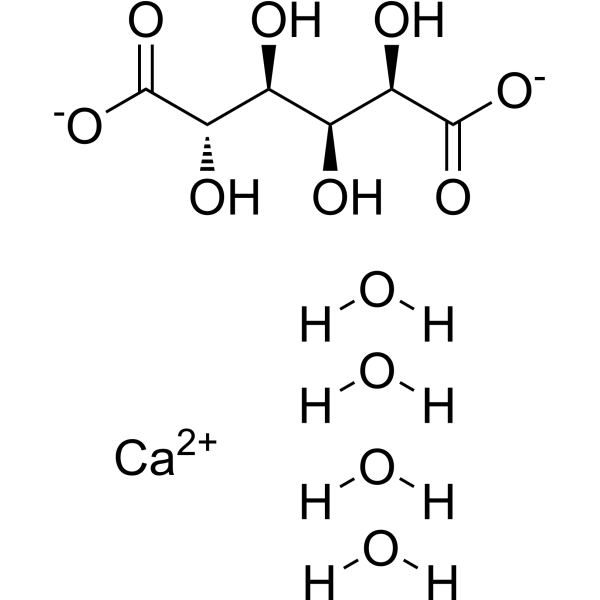
|
| DC66717 | Sodium stearyl fumarate |
Sodium stearyl fumarate can be used as an excipient. Pharmaceutical excipients, or pharmaceutical auxiliaries, refer to other chemical substances used in the pharmaceutical process other than pharmaceutical ingredients. Pharmaceutical excipients generally refer to inactive ingredients in pharmaceutical preparations, which can improve the stability, solubility and processability of pharmaceutical preparations. Pharmaceutical excipients also affect the absorption, distribution, metabolism, and elimination (ADME) processes of co-administered drugs.
More description
|
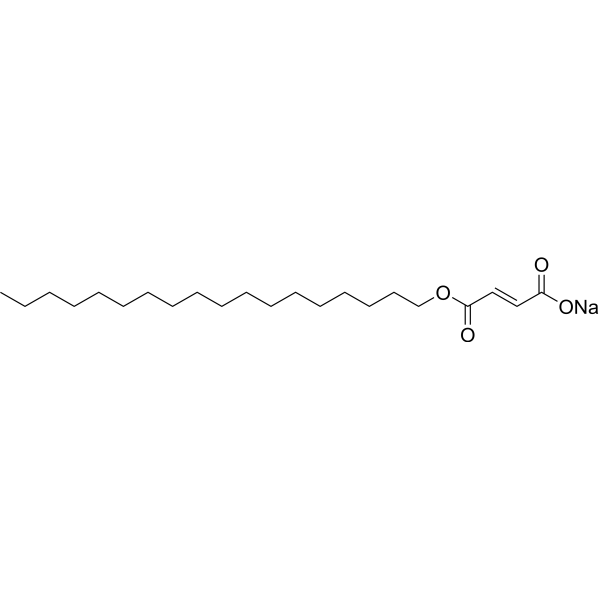
|
| DCM-019 | Propyl gallate |
Propyl gallate is a common food antioxidant. Propyl gallate can inhibit the production of acrolein, glyoxal and methylglyoxal.
More description
|
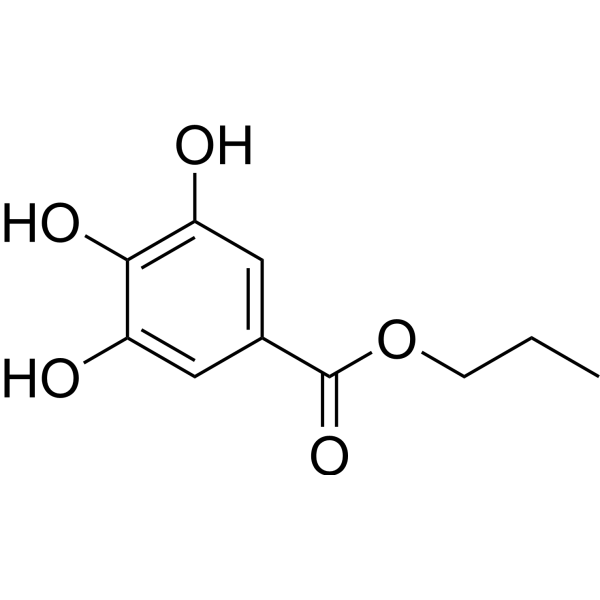
|
| DC32182 | DPPC Featured |
Colfosceril Palmitate, also known as 129Y-83 and DPPC, is the primary surface-active agent of natural lung surfactant and the major constituent of exogenous surface replacement preparations. Colfosceril Palmitate is used for the prophylaxis and treatment of neonatal respiratory distress syndrome.
More description
|

|
| DCAPI1279 | Aminocaproic acid (Amicar) |
Aminocaproic acid (Amicar)is a potent and orally active inhibitor of plasmin and plasminogen. 6-Aminocaproic acid is a potent antifibrinolytic agent. 6-Aminocaproic acid prevents clot lysis through the competitive binding of lysine residues on plasminogen, inhibiting plasmin formation and reducing fibrinolysis. 6-Aminocaproic acid can be used for the research of bleeding disorders.
More description
|
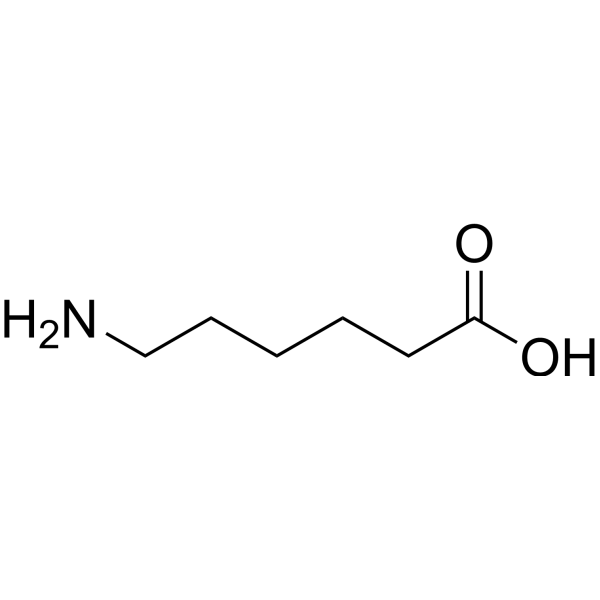
|
| DC40207 | Salcaprozate sodium |
Salcaprozate sodium (SNAC), an oral absorption promoter, and has the potential as a delivery agent for oral forms of heparin and insulin. Salcaprozate sodium could increase passive transcellular permeation across small intestinal epithelia based on increased lipophilicity arising from non-covalent macromolecule complexation.
More description
|
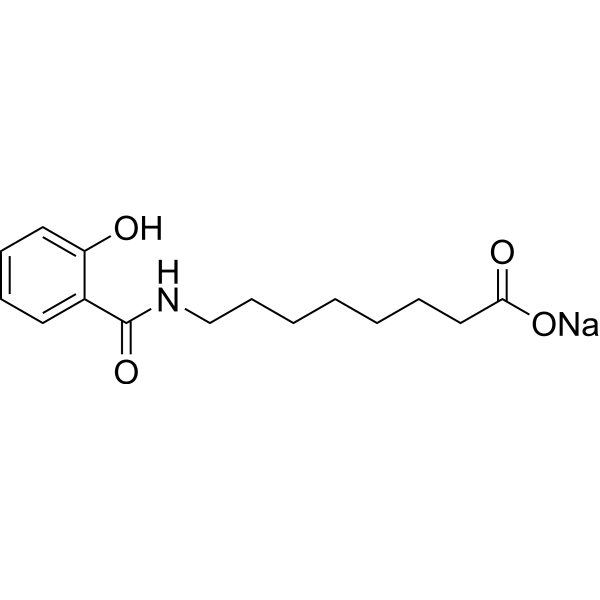
|
| DC66718 | Glycocholic acid |
Glycocholic acid is a bile acid with anticancer activity, targeting against pump resistance-related and non-pump resistance-related pathways.
More description
|
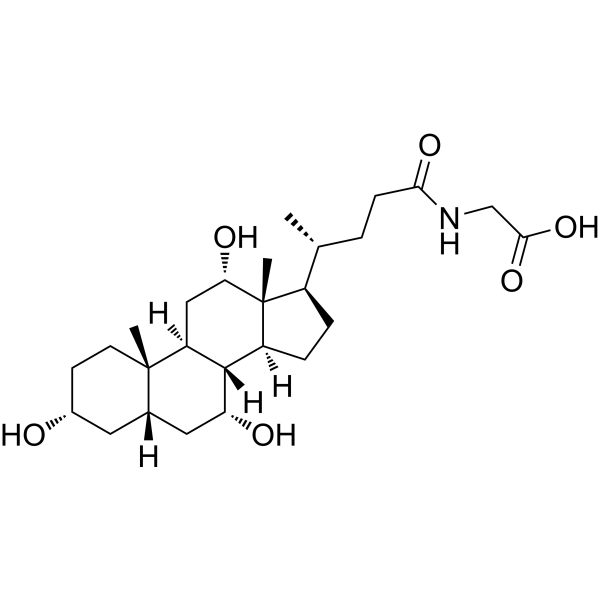
|
| DC66719 | L-Lysine hydrate |
L-Lysine hydrate is an essential amino acid. L-Lysine hydrate can be research for vascular calcification (VC) and acute pancreatitis.
More description
|
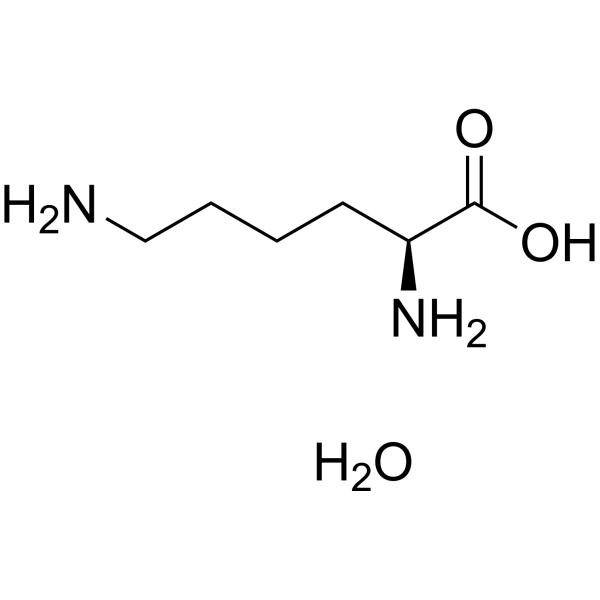
|
| DC12296 | D-(+)-Trehalose dihydrate |
D-(+)-Trehalose dihydrate can be used as a food ingredient and pharmaceutical excipient.
More description
|
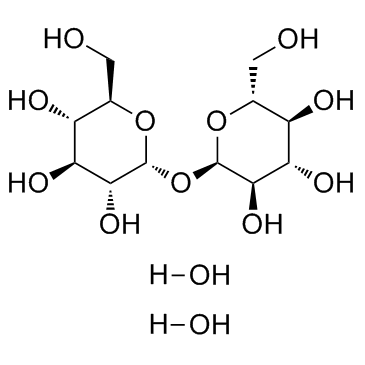
|
| DC66720 | DL-alpha-Tocopherol |
DL-alpha-Tocopherol is a synthetic vitamin E, with antioxidation effect. DL-alpha-Tocopherol protects human skin fibroblasts against the cytotoxic effect of UVB.
More description
|
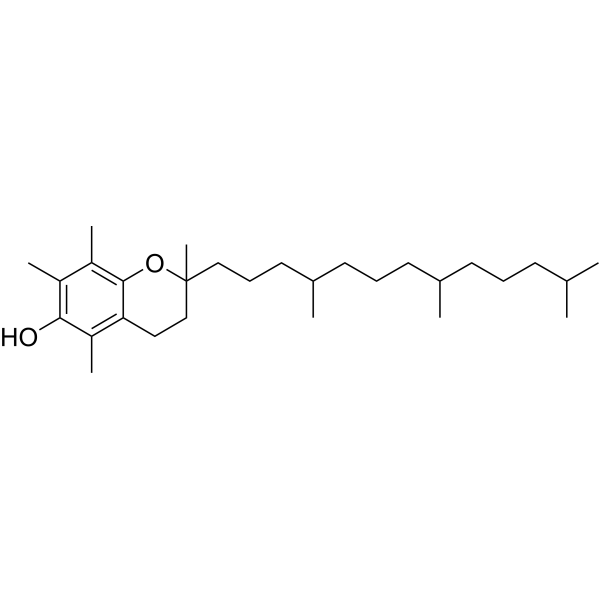
|
| DCAPI1060 | L-Ascorbyl 6-palmitate |
Ascorbyl palmitate is an ester formed from ascorbic acid and palmitic acid creating a fat-soluble form of vitamin C.
More description
|
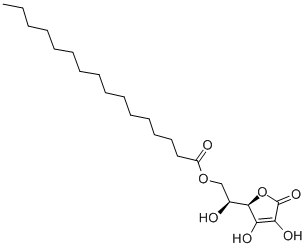
|
| DC66721 | Poly(sodium 4-styrenesulfonate) |
.gif)
|
|
| DC66722 | Lauroylsarcosine sodium |
Lauroylsarcosine sodium is a surfactant commonly used in personal care and cosmetics such as shampoos, facial cleansers and toothpaste. It works by lowering the surface tension of water, allowing it to better penetrate and clean surfaces. Lauroylsarcosine sodium is considered safe for cosmetic use and is approved for use in several countries. However, it can cause skin irritation in high concentrations or with prolonged exposure.
More description
|
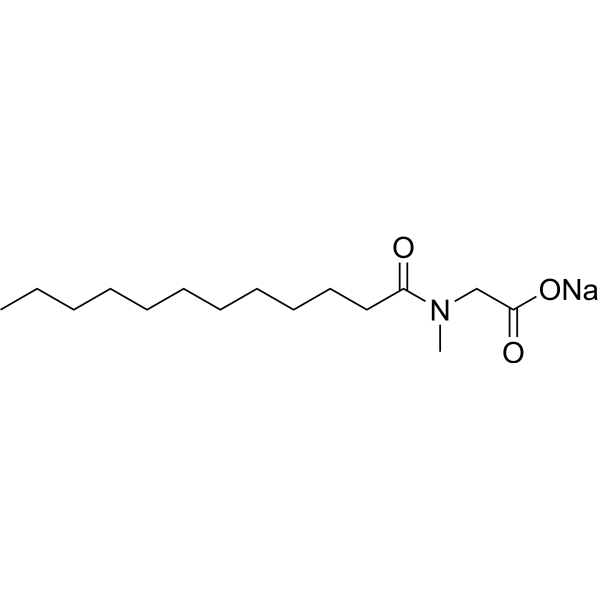
|
| DC66731 | Succinic anhydride |
Succinic anhydride is a cyclic anhydride and a nonclaevable ADC linker extracted from patent WO2009064913A1. Succinic anhydride can react with compound 4 of the patent to link the proagent to an amine or hydroxy 1 group of a targeting polypeptide.
More description
|
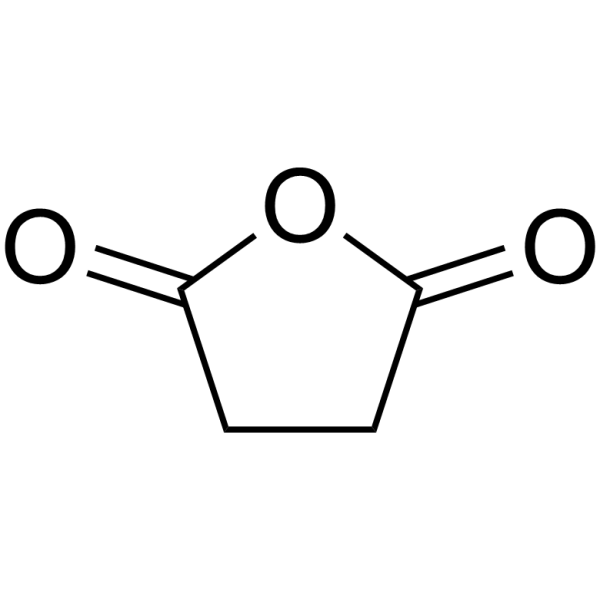
|